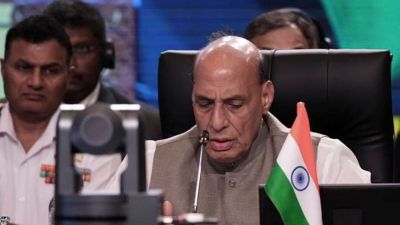Rakesh Roshan says carotid arteries were blocked 75%: Do we need a heart CT and ultrasound? AIIMS cardiologist explains what you really need
The only preventive measure is a determined lifestyle change and regular checkups for markers of blood.
 “A heart CT and a carotid brain artery sonography (which is often ignored completely) is a must for everyone above 45-50 years old,” actor and filmmaker Rakesh Roshan wrote on social media. (Credit: X/@RakeshRoshan_N)
“A heart CT and a carotid brain artery sonography (which is often ignored completely) is a must for everyone above 45-50 years old,” actor and filmmaker Rakesh Roshan wrote on social media. (Credit: X/@RakeshRoshan_N)Actor and filmmaker Rakesh Roshan has asked everybody to go for preventive health check-ups and screenings after his routine full-body health checkup showed that over 75 per cent of both his carotid arteries were blocked. He had no symptoms.
In his post, he wrote, “This week has been truly eye-opening. During a routine full-body health check-up, the doctor conducting the sonography for the heart suggested I also do one for the neck. By chance, we found out that although asymptomatic, both my carotid arteries to the brain were above 75 percent blocked. Which, if ignored, could be potentially dangerous.” He got preventive procedures done and wrote, “A heart CT and a carotid brain artery sonography (which is often ignored completely) is a must for everyone above 45-50 years old.”
Why keeping carotid artery free of blockage is important
Carotid arteries are two major blood vessels in the neck that supply blood to the brain, face and neck. Each carotid artery branches into two major arteries: the internal carotid artery, which supplies the brain, and the external carotid artery, which supplies the face and neck area. So if there is plaque deposition and blockages in these blood vessels, these can stop blood supply to the brain and lead to a stroke.
Do we need a heart CT and carotid brain artery sonography as preventive screening?
“We never recommend CT angiogram as it is not required,” says Dr Sandeep Seth, professor of cardiology, All-India Institute of Medical Sciences (AIIMS), New Delhi. “When it comes to big vascular structures like arteries, we go by risk factors which by and large exist in any Indian male above 40 given their genetic predisposition. So that is why we look at controlling all the risk factors from a younger age, be it diabetes, blood pressure, cholesterol, obesity and even Vitamin D deficiency,” he says. Vitamin D is needed for calcium regulation, inflammation and blood pressure control. Low vitamin D can impact calcium levels, thereby affecting heart muscle contraction and triggering irregular heartbeats or arrhythmia.
“The other most important factor we consider is family history. If a person has this risk, or has high BP, high cholesterol, smoking and sedentary lifestyle, then we do a CT calcium score for this high risk group. If the calcium score is high, it means a plaque buildup. Then we put the patient on cholesterol-lowering drugs,” says Dr Seth.
“If the patient has a family history, then we check the carotid artery, more specifically the carotid intima, which is the innermost layer of the carotid artery, composed of a single layer of endothelial cells. We measure the thickness of this inner layer or intima to assess cardiovascular disease risk. This can be done with a simple ultrasound test, which is not too expensive,” says Dr Seth.
This ultrasound helps detect early signs of plaque buildup in the carotid arteries and can be an early warning sign of potential heart problems, even before symptoms appear.
Are there symptoms of carotid artery blockage?
According to Dr Nishith Chandra, Principal Director, Interventional Cardiology, Fortis Escorts Heart Institute, New Delhi, “sudden dizziness, headache, blurry vision and loss of balance are signs of blockage.”
What are treatment options?
Procedures like carotid endarterectomy (surgical removal of plaque) or angioplasty with stenting can improve blood flow and reduce the risk of stroke. “This can be done by the cardiologist along with a neuro-interventionist,” says Dr Chandra.
What about preventive measures?
The only preventive measure is a determined lifestyle change and regular checkups for markers of blood sugar, cholesterol, blood parameters and keeping your weight in check.






- 01
- 02
- 03
- 04
- 05

























